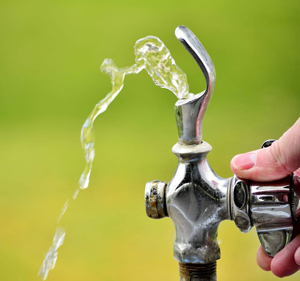 “Our newly developed website allows the public to search the status of lead testing of drinking water at schools in their area,” said Darrin Polhemus, State Water Board’s Division of Drinking Water deputy director. “This tool allows the public to stay informed as we continue to receive more results from the mandatory testing of public schools.”
“Our newly developed website allows the public to search the status of lead testing of drinking water at schools in their area,” said Darrin Polhemus, State Water Board’s Division of Drinking Water deputy director. “This tool allows the public to stay informed as we continue to receive more results from the mandatory testing of public schools.”Under Assembly Bill 746, which took effect Jan. 1, community water systems statewide are now required to complete lead sampling on the drinking water supplies of K-12 public schools and day care and preschools on public school properties built before 2010. Water systems must complete this mandatory sampling by July 1, 2019.
With about 12 months to go before the deadline, approximately 30 percent of California’s 10,000 public schools have been sampled for lead. Water systems that do not complete this mandatory sampling could face enforcement action from the State Water Board’s Division of Drinking Water.
Most public, K-12 schools in California are served by the more than 1,200 community water systems in the state. While these community water systems extensively and regularly test their drinking water for lead, lead could get into clean water at a school campus if there were corroded pipes or old fixtures at the school.
Lead sampling is done at drinking fountains and faucets used for consumption and preparing food. A water system must report the testing results within two business days if any samples show lead levels above 15 parts per billion (ppb). Water systems have 10 business days to report results if samples show lead levels less than, or equal to, 15 ppb.
If a school’s lead level exceeds 15 ppb, then the water system is required to sample water entering the school to help determine the possible source of lead. The school must also take several actions, including shutting down all fountains and faucets with high lead levels, providing potable drinking water until the situation is resolved, and notifying parents and guardians of students. Additional testing may be required to determine if all or just some of the school’s fountains and faucets are required to be shut down.
Private schools are not required to be sampled under AB 746 but may request free sampling under the State Water Board’s voluntary Lead Sampling in Schools Program, which remains in effect until Nov. 1, 2019.
Because California has newer infrastructure and less corrosive water than other parts of the country, less than 1 percent of all samples collected so far have detected elevated levels of lead.
However, national events have highlighted the importance of ongoing water quality monitoring and in 2015 Governor Edmund G. Brown Jr. directed the State Water Board to incorporate schools into the regular water quality testing that community water systems conduct at customer’s taps.
For more information on the Lead Sampling in Schools Program and information on AB 746, visit the State Water Board’s webpage here.
Source: CA. State Water Boards









